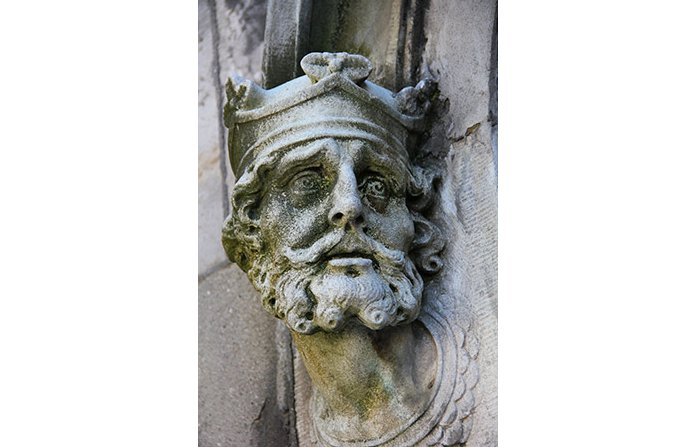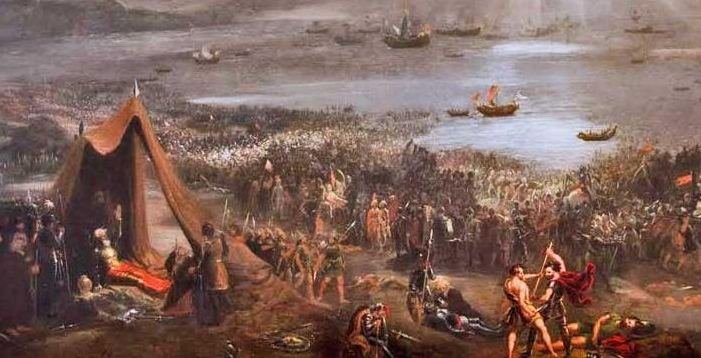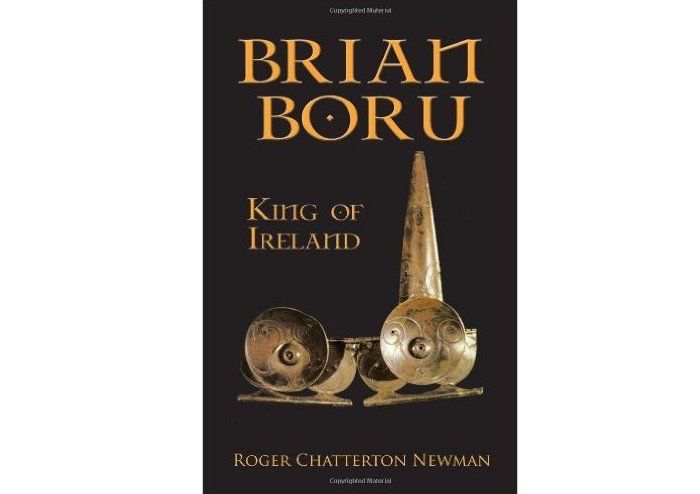Brian Boru – Famous And Brave Irish Hero Who Dared To Chase Off The Vikings
Ellen Lloyd - AncientPages.com - On April 23, people in Ireland celebrate Brian Boru, one of their greatest heroes who became famous for chasing off the Vikings.
Brian Boru was an Irish Christian king who died on Good Friday at the Battle of Clontarf. He dreamt of a free, united Ireland; his greatest goal was to eliminate the invading Vikings. So, he decided to do what no one dared before – namely, to force the Vikings to leave Ireland once and for all.
Brian Boru, King of Munster. An eighteenth-century illustration of Brian Bóruma mac Cennétig (died 1014). Unknown author - The General History of Ireland - Public Domain
The battle took place on April 23, 1014, at Clontarf, near Dublin and it was a deceive moment in the history of Ireland. Like many other freedom fighters, Brian Boru paid the highest price for the nation's liberty.
Who Was Brian Boru?
Born Brian Mac Cennétig in the province of Munster around 941 AD, Brian was the youngest of 12 brothers, all but two of whom would be killed in battle.
In 951, Brian Boru's brother Mahon became King of Munster, and together, they fought against the invading Norsemen, who had imposed taxes on Munster. This struggle eventually led to the murder of Mahon in 975 by the Ostermen (Norse). Brian avenged his brother's death by killing King Ímar, the ruler of the Ostermen of Limerick.
In 997, Boru allied with the reigning Irish high king, Mael Sechnaill (or Malachy) of Meath. Mael dominated the north of Ireland and Brian the south. Boru and Malachy were rivals, despite the alliance. In 1002, Boru defeated the Ui Neill or O'Neill dynasty, which had ruled Ireland for generations. Malachy was Later the same year, for reasons unknown, most likely due to isolation, Mael surrendered the high kingship to Brian, who thus became High King.
Viking Invasion Of Ireland
One of the most significant problems in Ireland during these times was coping with the Viking invasion.
Vikings were first spotted off the coast of Ireland in AD 792. In the 9th century, the Vikings invaded the region around Dublin and established the Norse Kingdom of Dublin. They founded a new town on the south bank of the Liffey called Dubh Linn, which means black pool. Other Viking settlements included Waterford, Wexford, Cork, and Limerick, while bands of Norse warriors frequently served with rival Irish kings as mercenaries.
High king: Brian Boru depicted on the exterior of the Chapel Royal, Dublin Castle
The Viking invasion made ordinary life troublesome. Not only were the Irishmen poorly treated in their own country, but the Vikings also demanded high taxes from the Irishmen, which led to frequent and brutal clashes between natives and invaders.
Living nearby, the Irish warriors and Vikings constantly fought, with tribal factions joining one side or the other as circumstances dictated. From such violent relations, blood feuds developed over the generations. Many Irish boys were adopted by Norse settlers and became vicious fighters known to the Irish as the Gall-Gael, or "Sons of Death."
At the same time, several Irish kings fought against each other, and there was chaos in the country. Five regions, Meath, Leinster, Munster, Connacht, and Ulster, were controlled by one of five powerful clans. Each area had a king, but he was forced to share his power with another clan leader, chiefs, and minor kings.
The population of Ireland was only 500,000 at the time, and about 30 local kings battled each other incessantly. A peace treaty often lasted just a few days.
Vikings took advantage of the chaotic situation and the nation's disputes naturally. It made the Viking invasion of Ireland much more manageable, and many kings in the country supported the fearsome Norsemen.
Brian Boru was not one of them. He wanted Ireland to belong to the Irishmen. However, in 1013 he did try to have a peaceful relationship with the Vikings. Still, it all ended when Boru's son and the Viking king of Leinster, Mael Morda, had an argument when playing Hnefatafl, a Viking board game similar to chess. Boru tried to resolve the issue but in vain. The Vikings and Irishmen were enemies once again.
Guests from Overseas (1901) by Nicholas Roerich, depicts a Varangian raid. Image credit: Nicholas Roerich - Public Domain
Boru was religious and deeply saddened by the Vikings' devastation of holy places. He earned his name as 'Brian of the Tributes' (Brian Boru) by collecting tributes from the minor rulers of Ireland and using the money raised to restore monasteries and libraries that had been destroyed during the invasions.
The Irish High King Brian Boru wanted to unite his people, but his enemies - including the Viking Brodir of Man - stopped him at Clontarf in 1014.
Battle Of Clontarf - The Final Battle Opens A New Chapter In The History Of Ireland
The Vikings had fooled Irish High King Brian Boru into thinking they had deserted their allies at the fortress of Dublin. The Viking forces grew stronger and stronger. Mighty Viking leaders united to end the rule of Brian Boru.
In reality, the Vikings had sailed out of sight. They deliberately returned in the darkness, hoping to catch the Irish unprepared for the enemy's reappearance the following day.
The Vikings also knew that Brian, who was deeply religious, would be reluctant to do battle on such a holy day as April 23, 1014, Good Friday.
Painting of the Battle of Clontarf by Hugh Frazer in 1826
The night before the battle, the Vikings were informed that Sigurd, the Viking Earl of the Orkney Isles, had brought a sacred raven banner woven by his mother, which had the magical properties of ensuring victory for the army if carried before it. Unfortunately, it also promised death to its bearers.
He tried to downplay that part of the prophecy, but he had difficulty finding volunteers to bear his mother's banner the following day.
Just as planned, on April 23, 1014, Brian Boru was attacked by an alliance of Leinstermen and Norsemen from Dublin under Sitric Silkbeard, who brought in Norse warriors from the Hebrides and the Isle of Man. Irishmen and Norsemen were on both sides, and it was a ferocious struggle, said to have lasted all day. Brian Boru was 72 years and too old to fight, but his son Marduch managed to kill the Viking king of Leinster, Mael Morda, and Sigurd, the Viking Earl of the Orkney Isles. Marduch was soon after brutally slaughtered by the Vikings.
The Vikings were famous for being outstanding and fearless warriors and were by no means easy to defeat. Still, the Irishmen fought with remarkable courage, and the Norsemen soon knew they were defeated. The Vikings fled to their longships, but several hundred Viking warriors drowned.
When the Viking warrior Brodir of the Isle of Man fled with his men through the woods, they spotted a tent. Brodir looked inside and could hardly believe his eyes when he saw Boru lying on his knees and praying. Without hesitation, Brodir decapitated Brian with one blow. The High King died instantly. Brodir was captured and killed by the Irishmen. Brian's body was taken to Armagh and buried there in St Patrick's cathedral.
The Vikings were defeated and lost interest in Ireland. Instead, they focused on Scotland and England.
Brian Boru is a half-mythical Viking era figure chiefly remembered as the man 'who drove the Danes from Ireland', and who died at the Battle of Clontarf on Good Friday 1014. But there was far more to his life than that. The youngest son of an obscure king from Thomond, he came closer than any other Irishman before him or after him to uniting Ireland. He tamed the Danes of Limerick and the Norsemen of Dublin, overthrew the six-century monopoly of the Uí Néill on the high throne of Ireland and became one of the few high kings to invest that throne with any real authority. Read more
The Battle of Clontarf was costly. Losses to both sides were incredibly high. Out of a total of 7,000 and 8,000 combatants, the estimated allied loss was more than 6,000, including almost all the leaders. Irish losses were at least 1,600 and perhaps as high as 4,000, including their king, Brian Boru. It became one of the bloodiest battles in Irish history.
Brian Boru's dream of a united Ireland did not become a reality then, but his goal to force Vikings to leave Ireland was successful.
Brian Boru remains a figure of central importance today, and he is celebrated on April 23 every year.
Written by - Ellen Lloyd – AncientPages.com
Updated on January 21, 2024
Copyright © AncientPages.com All rights reserved. This material may not be published, broadcast, rewritten or redistributed in whole or part without the express written permission of AncientPages.com
Expand for referencesMore From Ancient Pages
-
 Why Did Ancient Egyptian Scribes Face Serious Health Risks?
Archaeology | Jun 27, 2024
Why Did Ancient Egyptian Scribes Face Serious Health Risks?
Archaeology | Jun 27, 2024 -
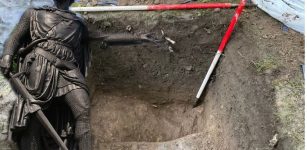 Most Important Road In Scottish History Found In The Garden Of The Old Inn Cottage Near Stirling
Archaeology | Nov 16, 2023
Most Important Road In Scottish History Found In The Garden Of The Old Inn Cottage Near Stirling
Archaeology | Nov 16, 2023 -
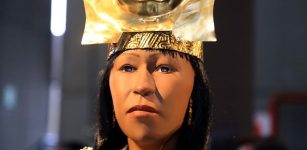 Face Of Queen Lady Cao Reconstructed – Unique Look At The First Known Female Ruler In Peru
Archaeology | Jul 10, 2017
Face Of Queen Lady Cao Reconstructed – Unique Look At The First Known Female Ruler In Peru
Archaeology | Jul 10, 2017 -
 Non-Tobacco Plant Identified In Ancient Pipe Using New Technology
Archaeology | Jun 30, 2020
Non-Tobacco Plant Identified In Ancient Pipe Using New Technology
Archaeology | Jun 30, 2020 -
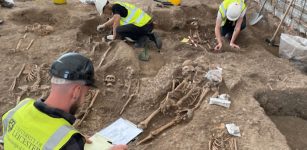 Ancient Roman Shrine And Over 1,100 Burials Found Beneath The Leicester Cathedral
Archaeology | Mar 7, 2023
Ancient Roman Shrine And Over 1,100 Burials Found Beneath The Leicester Cathedral
Archaeology | Mar 7, 2023 -
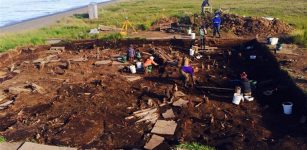 Archaeologists uncover new Yup’ik artifacts near Quinhagak, Southwest Alaska
Artifacts | Aug 28, 2015
Archaeologists uncover new Yup’ik artifacts near Quinhagak, Southwest Alaska
Artifacts | Aug 28, 2015 -
 Copyright Violations By Earth-Chronicles.com – Fake Site That Steals Content From Ancient Pages Daily
News | Dec 28, 2017
Copyright Violations By Earth-Chronicles.com – Fake Site That Steals Content From Ancient Pages Daily
News | Dec 28, 2017 -
 Unexplained Mystery In Ohio – Unusual Force Puzzles Scientists
Featured Stories | Dec 21, 2018
Unexplained Mystery In Ohio – Unusual Force Puzzles Scientists
Featured Stories | Dec 21, 2018 -
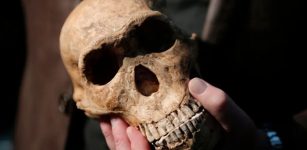 Surprising Evolution Discovery – Extinct Subterranean Human Species With Tiny Brains Used Fire
Archaeology | Dec 9, 2022
Surprising Evolution Discovery – Extinct Subterranean Human Species With Tiny Brains Used Fire
Archaeology | Dec 9, 2022 -
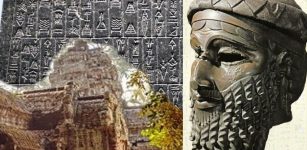 Collapse Of Akkadian Empire Strongly Related To Catastrophic Climate Change
Archaeology | Oct 28, 2019
Collapse Of Akkadian Empire Strongly Related To Catastrophic Climate Change
Archaeology | Oct 28, 2019 -
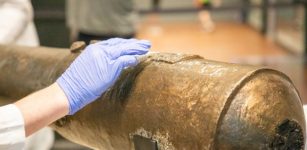 Anthropologists’ Quest To Save An Alamo Cannon
News | Aug 7, 2024
Anthropologists’ Quest To Save An Alamo Cannon
News | Aug 7, 2024 -
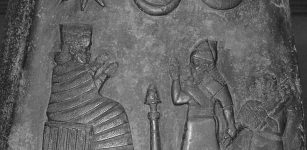 Kudurru Of Melishihu – Stone Records From The Kassite Dynasty In Babylonia
Artifacts | Jan 17, 2016
Kudurru Of Melishihu – Stone Records From The Kassite Dynasty In Babylonia
Artifacts | Jan 17, 2016 -
 Ensisheim Meteorite Is The Oldest Meteorite With A Precise Date Of Impact
Ancient History Facts | Jun 29, 2018
Ensisheim Meteorite Is The Oldest Meteorite With A Precise Date Of Impact
Ancient History Facts | Jun 29, 2018 -
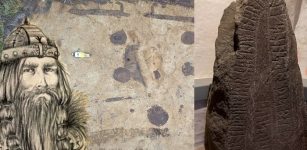 Huge Viking Hall From Harald Bluetooth’s Time Discovered In North Jutland
Archaeology | Dec 22, 2022
Huge Viking Hall From Harald Bluetooth’s Time Discovered In North Jutland
Archaeology | Dec 22, 2022 -
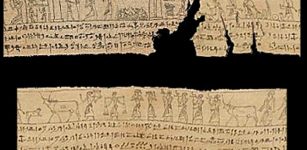 300 BC Mummy Shroud Fragment In NZ Finds Match In US
Archaeology | Jul 18, 2021
300 BC Mummy Shroud Fragment In NZ Finds Match In US
Archaeology | Jul 18, 2021 -
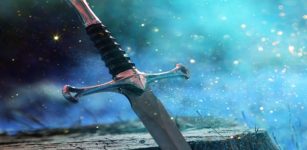 Skofnung – Formidable Sword With Supernatural Powers That Belonged To Legendary Danish King Hrólf Kraki
Featured Stories | Mar 3, 2018
Skofnung – Formidable Sword With Supernatural Powers That Belonged To Legendary Danish King Hrólf Kraki
Featured Stories | Mar 3, 2018 -
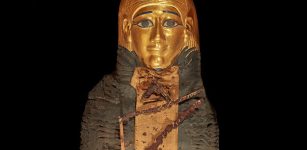 Egyptian ‘Golden Boy’ Mummy Was Protected By 49 Precious Amulets On His Journey To The Afterlife – CT Scans Reveal
Archaeology | Jan 24, 2023
Egyptian ‘Golden Boy’ Mummy Was Protected By 49 Precious Amulets On His Journey To The Afterlife – CT Scans Reveal
Archaeology | Jan 24, 2023 -
 Remarkable Underground City Of Nushabad: A Masterpiece Of Ancient Architecture
Ancient Technology | Nov 17, 2015
Remarkable Underground City Of Nushabad: A Masterpiece Of Ancient Architecture
Ancient Technology | Nov 17, 2015 -
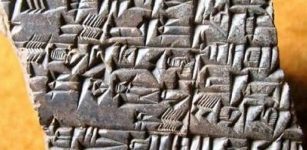 Sumerian Clay Brick With Inscription In Honor Of God Enki Returns To Iraq
Archaeology | May 5, 2015
Sumerian Clay Brick With Inscription In Honor Of God Enki Returns To Iraq
Archaeology | May 5, 2015 -
 Intriguing El Tajin – Pre-Hispanic Ceremonial Site Dedicated To Totonac Rain God
Featured Stories | Jul 17, 2016
Intriguing El Tajin – Pre-Hispanic Ceremonial Site Dedicated To Totonac Rain God
Featured Stories | Jul 17, 2016


